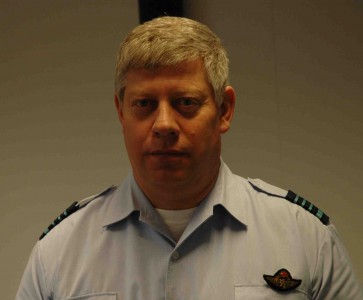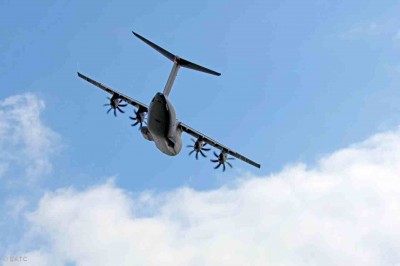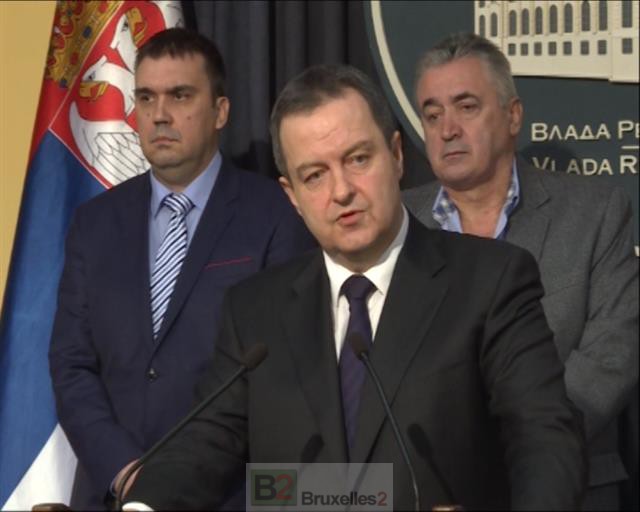(EATC File) A titanic task: harmonization

(BRUXELLES2) This is called the “functional division” at EATC. A rather innocuous word that hides a titanic work. " Align our rules of employment as much as possible as explained by Mike De Coninck, C-130 pilot and former operations commander of the 15e Wing and who was one of the precursors of the EATC since he was in the preparatory team (Implementation team), based in Beauvechain (Belgium) for several years already. He talks to us about his division and a few emblematic projects, the harmonization of employment conditions, the intervention to simplify flight authorizations, training on tactical aircraft or the preparation for the arrival of the A400M.
A device with variable geometry
The functional division works in four directions: employment, training and exercises, logistics capacities and fleet management… according to a variable geometry system. Clearly, common integration depends on subjects and nations. Three levels of intervention have thus been defined: from the basic level (EATC is a force of proposal, recommendation) to the higher level when the nation entrusts a part of the decisions (issuance of directives, authority of command) via an intermediate level by organizing reflection (decision support, coordination authority). If transferring the OpCon is relatively easy, transferring additional skills in the functional area is more difficult. Currently, EATC does not have much "Command authority" but more strength of proposals. But there is one conviction: Nothing can be done except in a process of sharing responsibility. It is now necessary to gain consistency and that, little by little, the recommendations gain in importance ". EATC operates a soft and progressive transfer, guided by the need to move forward together. With an advantage: in the air, there is already a de facto integration. The objective is therefore to set up processes ».

Harmonize employment conditions
The harmonization of employment conditions and crews is essential if one day we want to be able to have mixed crews, on the A400M for example as on others. Imagine that rest or flight times may differ today. " So we have to harmonize flight times, required rest times, etc. A first study was carried out in September. But there are not only the rules of employment. You also need to pay for flight permits.
Simplify flight authorizations (clearance)
The biggest difficulty is procedural. To fly over or land in any country, diplomatic clearance is required for each flight. In other words, a formality that requires a lot of work for military air planners. EATC's work goes in two directions: have agreements with certain countries, to eliminate or simplify the procedure, incorporate within EATC the request for 'clearance'».
In NATO countries, the procedure is already simplified. But this simplification does not produce all these effects. A "standard clearance" is, in fact, valid for the whole year but only for flights which take place without dangerous products, without ammunition and without VIPs. In these three other cases, specific authorization is required. Which is rather common when it comes to military flight. A first step has just been taken between the four countries of the EATC to abolish this special authorization. Only an information obligation for VIPs is maintained; a necessity, if for some reason the plane is forced to divert and land urgently, it is necessary to be able to foresee the reception of this personality. “A huge step forward”. Identical work is underway at the European Defense Agency (EDA) to extend this “standard clearance” to other countries. This work involves the experts from EATC who negotiate on behalf of the four countries it represents.
The other line of work concerns the simplification of the application procedure. Normally the military must ask their Ministry of Foreign Affairs who manages the "clearance". To date, the Dutch have already integrated the “Clearance” mechanism within them (at the EATC), by directly contacting the embassy of the country concerned. Which accelerates as much and
Tactical aircraft training
EATC is working on the training of pilots on tactical aircraft (EATT). A first EATT exercise will take place in 2012 in Spain. The initial planning conference took place in early March in Zaragoza. Eventually, this system must grow. EATT is the replica, in fact, of the NATO initiative (the tactical level program TLP) for fighter pilots but intended for tactical transport. The reason is very pragmatic. " Today, European airmen who want to be trained on the C-130 must travel to the United States. But we are invited to the dropper ". However, with theaters of operation, like Afghanistan, greedy in men and machines, the " needs multiply ". The objective is not to train the pilots completely but to train them in certain operating modes, such as landing in tactical defense mode, on terrain that is if not hostile, at least which can turn out to be unfriendly.
Preparing for the arrival of the A400M in the fleets

This is a key issue for the future. Because it is EATC which will have the command of this multinational unit which will bring together 4 of the 7 countries purchasing the A400M (France, Germany, Belgium, Luxembourg). In particular, it is necessary to write the draft concept of the unit and the doctrine of employment. " It is a huge responsibility that weighs on the shoulders. You have to get out of preconceived plans (Think out of the box). (…) If we do multi-national and we add all the limits of each country, it is not useful at all ».
The arrival of the A400M will be the true life-size test of the functional dimension of the EATC. The project is in a way “revolutionary”. For the first time, the fleets will have a common structure before the arrival of a new aircraft. But we have to invent a whole series of solutions. It's "very complicated" admits one of the managers in charge of the file. We have to negotiate the legal aspects – like the constitutional problem for Germany –, the financial aspects – do we need an independent budget or not, what are the distribution keys? —, operational — it is necessary to define the levels of command, who will manage?, set the objectives… — technical, logistics and infrastructure. Belgium has applied to host the unit.
Everything must be finished by the end of the year because everyone is hoping for the signature of the political authorities in mid-2012. If the arrival of the plane is staggered – between 2013 for France and 2018 for Belgium – the date of entry into service of the first plane is now very close. And you have to go fast. The IOC should take place in 2017 or 2018.
The first objective is to align the training of pilots and mechanics of the A400M. The aircraft already differs a bit: on the self-defense systems (a British request) as there are differences between the French and German aircraft. But it is necessary to limit these divergences, not to reproduce the example of the French and German Transall.
NB: Signed at the Council of Defense Ministers on November 10, 2008, the EATF brings together 12 EU Member States (Belgium, Czech Republic, France, Germany, Greece, Italy, Luxembourg, Netherlands, Portugal, Romania, Slovakia and Spain), with a fleet sharing objective. Countries equipped with the A400M having opted for further integration.
The folder :
- At the heart of the EATC system (maj)
- At the command of EATC, General Jochen Both
- The ETAC “company”: an unrivaled integration experience
- 167 aircraft on hand
- EATC active in Operation Pegasus, the repatriation of Europeans from Libya
- Medevac (medical evacuation), a specific function within EATC
- A titanic task: harmonization



